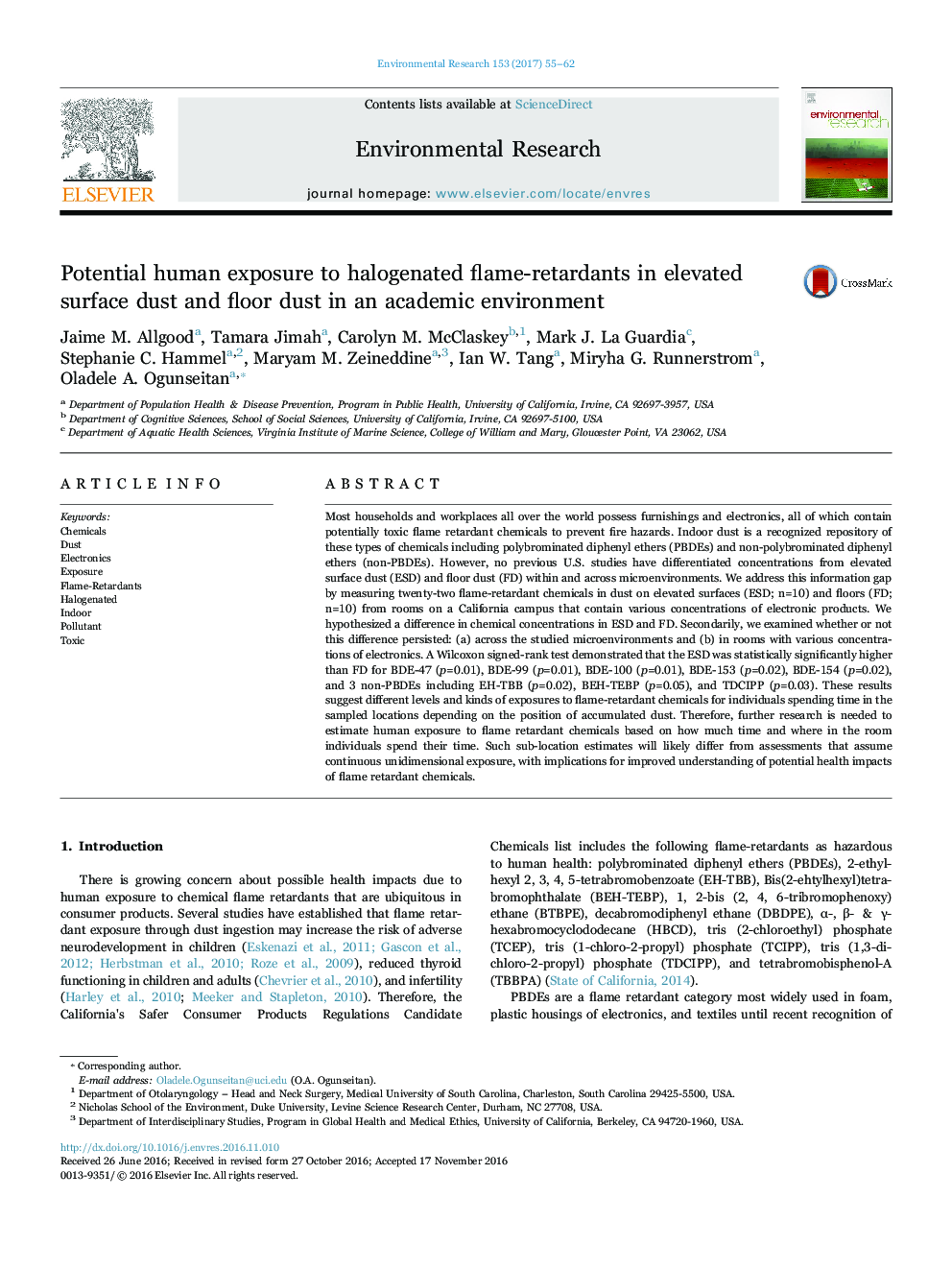| کد مقاله | کد نشریه | سال انتشار | مقاله انگلیسی | نسخه تمام متن |
|---|---|---|---|---|
| 5756249 | 1622550 | 2017 | 8 صفحه PDF | دانلود رایگان |
عنوان انگلیسی مقاله ISI
Potential human exposure to halogenated flame-retardants in elevated surface dust and floor dust in an academic environment
ترجمه فارسی عنوان
قرار گرفتن در معرض انسولین در برابر انفجار با شعله های هالوژن شده در گرد و غبار سطح بالا و گرد و غبار کف در محیط دانشگاهی
دانلود مقاله + سفارش ترجمه
دانلود مقاله ISI انگلیسی
رایگان برای ایرانیان
کلمات کلیدی
مواد شیمیایی، گرد و خاک، الکترونیک، گرفتن در معرض، شعله بازدارنده، هالوژن داخل سالن، آلودگی سمی،
موضوعات مرتبط
علوم زیستی و بیوفناوری
علوم محیط زیست
بهداشت، سم شناسی و جهش زایی
چکیده انگلیسی
Most households and workplaces all over the world possess furnishings and electronics, all of which contain potentially toxic flame retardant chemicals to prevent fire hazards. Indoor dust is a recognized repository of these types of chemicals including polybrominated diphenyl ethers (PBDEs) and non-polybrominated diphenyl ethers (non-PBDEs). However, no previous U.S. studies have differentiated concentrations from elevated surface dust (ESD) and floor dust (FD) within and across microenvironments. We address this information gap by measuring twenty-two flame-retardant chemicals in dust on elevated surfaces (ESD; n=10) and floors (FD; n=10) from rooms on a California campus that contain various concentrations of electronic products. We hypothesized a difference in chemical concentrations in ESD and FD. Secondarily, we examined whether or not this difference persisted: (a) across the studied microenvironments and (b) in rooms with various concentrations of electronics. A Wilcoxon signed-rank test demonstrated that the ESD was statistically significantly higher than FD for BDE-47 (p=0.01), BDE-99 (p=0.01), BDE-100 (p=0.01), BDE-153 (p=0.02), BDE-154 (p=0.02), and 3 non-PBDEs including EH-TBB (p=0.02), BEH-TEBP (p=0.05), and TDCIPP (p=0.03). These results suggest different levels and kinds of exposures to flame-retardant chemicals for individuals spending time in the sampled locations depending on the position of accumulated dust. Therefore, further research is needed to estimate human exposure to flame retardant chemicals based on how much time and where in the room individuals spend their time. Such sub-location estimates will likely differ from assessments that assume continuous unidimensional exposure, with implications for improved understanding of potential health impacts of flame retardant chemicals.
ناشر
Database: Elsevier - ScienceDirect (ساینس دایرکت)
Journal: Environmental Research - Volume 153, February 2017, Pages 55-62
Journal: Environmental Research - Volume 153, February 2017, Pages 55-62
نویسندگان
Jaime M. Allgood, Tamara Jimah, Carolyn M. McClaskey, Mark J. La Guardia, Stephanie C. Hammel, Maryam M. Zeineddine, Ian W. Tang, Miryha G. Runnerstrom, Oladele A. Ogunseitan,
